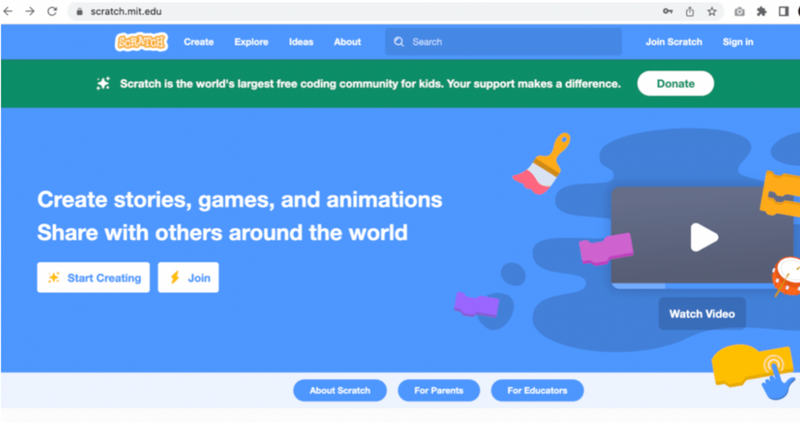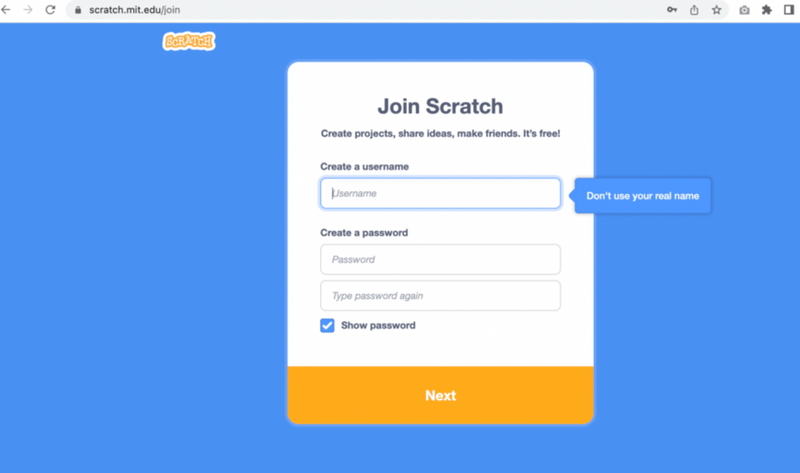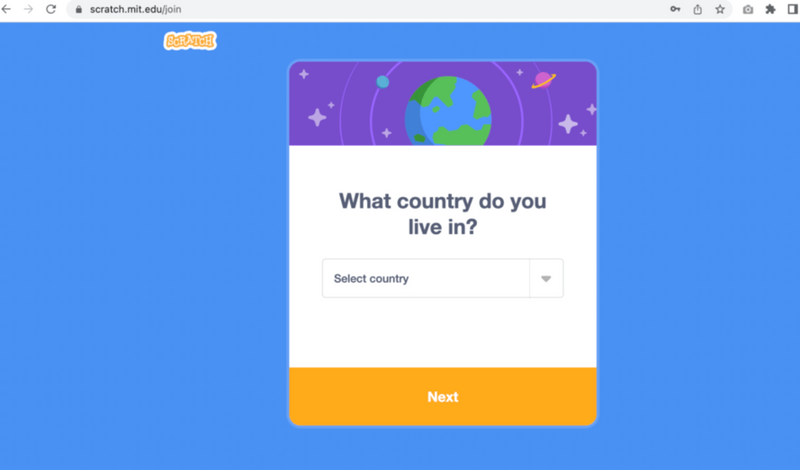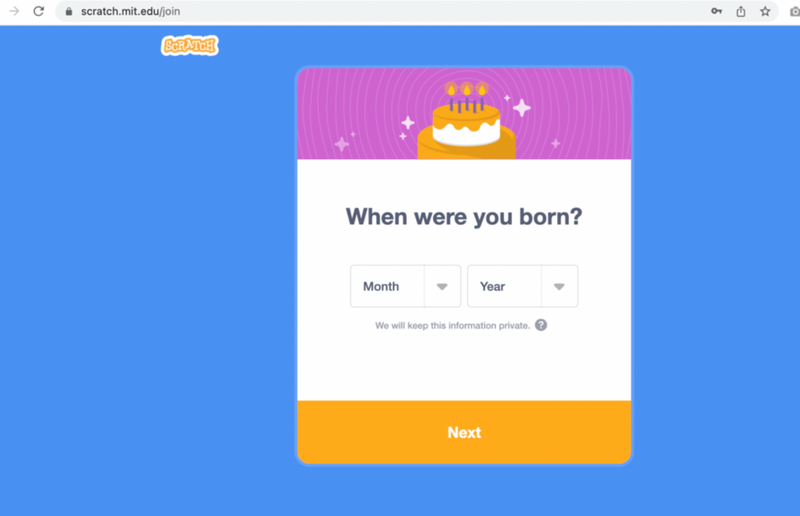Are you looking for the best ways to get started with coding for high school students, or advance your students computer science skills further? You're in the right place! Coding is a valuable skill for anyone to have in today's digital age, and it can be especially useful for high school students to learn as they start to think about college and career options.
So today, we will discuss the benefits of learning to code for high school students, as well as some resources and programs available to get started. We'll even share some free live classes that your teen can take to build their interest in coding. Whether you are a teacher looking for ways to incorporate coding into your curriculum, or a parent wanting to support your child's interests, you'll find just what you need.
Start Coding For High School Students
If you have a teen who is interested in learning to code or advancing their existing skills, the first step is to identify the right programming language to learn. There are many programming languages out there, and each one has its own unique set of features and capabilities. Some programming languages are better suited for certain age groups or interests than others.
Coding for beginners in high school
For example, if your student is just starting out and is looking for a language that is easy to learn, you might consider Scratch or Python. Both of these languages have a relatively simple syntax and are popular choices for beginners. We recommend getting started with Scratch, and have provided a quick tutorial on how to get started below. It's a fun, free and easy language to quickly bring ideas to life, while learning basic coding concepts and logic that students can apply to all their future coding experience. For live expert guidance creating cool games in Scratch, and a curriculum designed by experts from Google, Stanford, and MIT, join our free online Accelerated Scratch coding class.
However if you have no previous coding experience and are willing to spend a moderate amount of time practicing, you can also begin with popular real-world programming language Python.
For more advanced high school coders
On the other hand, if your child is an experienced coder or has a specific career goal in mind (such as becoming a web developer or mobile app developer), you may want to consider encouraging them to learn a more advanced programming language such as Java or C++.
This video can help you narrow down your student's options. It has an in-depth look at what languages would be best for teens based on their age and interests.
And if you're choosing between more advanced options, check out this chart to discover which might be best for your student to learn:

How to Sign Up and Get Started With Scratch for High Schoolers
If you'd like to explore Scratch before your student begins using it, or help them set their account, just follow these simple steps.
1. Go to Scratch on MIT to sign up for a free Scratch account. Click "Join Scratch" at the top right.

2. Create a username and password. Choose a username and password that will be easy to remember, but complex enough for security purposes.

3. Select the country you live in.

4. Enter the month and year your student was born.

5. Select your student's gender.

6. Enter your email address.

7. Get started creating and exploring with your child!
Find out more about how to find inspiration for your first project to make, and how to begin following tutorials on Scratch here: Scratch programming for beginners.
Top Free Coding Programs and Websites For High School Students
Figuring out where to start with teaching your child programming can be extremely hard if you do not have the knowledge or funds to teach them to their highest ability. Luckily, there are plenty of free and amazing resources, including classes and camps that can help your child learn coding.
1. Create & Learn's Free Coding Classes
Create & Learn’s classes are a great fit for any student, with 30+ computer science subjects rated 5-stars by parents and students. With our award-winning curriculum recognized by Minecraft Education, Roblox Education, SMASH, and more, your child can enjoy the best learning experience possible, from the comfort of home. There are a number of free introductory classes so your child can explore their interests and passions to find the right fit!
Grades: K-12
Format: Live online classes
Pros:
- Award-winning curriculum.
- Classes for all ages.
- Small class size.
Cons:
- You may need to schedule far out due to classes being full.
- May need high-speed internet for Zoom and other programs to function properly.
Parents - If you are interested in giving it a try, explore our free coding classes. Teachers - Book free virtual coding classes for your students - any time of the year! We serve all schools and community organizations. Just try our Hour of Code activity classes for groups of 10+ students, by picking the subject you're interested in and contacting us. We'll get in touch to get you all set up for your live Zoom sessions.
2. W3 Schools
This is a great tool for more advanced coders. W3 Schools provides simplified and interactive learning experiences for programming languages including HTML, CSS, Javascript, Python, and more. Students can follow their tutorials, use their Try It Yourself online editor to see their work come to life, and also challenges themselves with quizzes and exercises.
Grades: 5+
Format: Self-paced online tutorials
Pros:
- All of the content is free.
- Easy access to any course's materials.
- Allows students to work at their own pace.
Cons:
- No structured support if a student gets stuck on a problem.
3. Khan Academy
Khan Academy is a nonprofit organization with a mission to provide free, world-class education for everyone. They use practice exercises, videos, and a learning dashboard to help students learn at their own pace. They focus on a multitude of topics so computer science is not the only focus of Khan Academy. Their main focus is skill mastery to help learners establish strong foundations, so there's no limit to what they can learn next.
Grades: K-12
Format: Practice exercises, instructional videos, and personalized learning areas.
Pros:
- All of the classes are free.
- Easy access to any course.
- Multiple subjects to choose from (beyond computer science).
- Allows students to work at their own pace.
Cons:
- Less interactive than having a tutor or teacher over Zoom.
- Only exposed to one teaching style.
- It can only instruct and not inspire and guide students.
Discover the Best High School Coding Curriculum
A high school coding curriculum is a structured program of study that helps students learn the principles of computer programming and develop their skills. Coding curricula can be helpful for high school students in a number of ways. First, learning to code can help students develop critical thinking and problem-solving skills that are applicable to a wide range of careers and fields. Coding can also be a creative outlet for students, as it allows them to build and design their own digital projects and applications.
In addition to these general benefits, a high school coding curriculum can also provide students with a solid foundation in computer science that can help them succeed in college and beyond. Many universities and employers are looking for candidates with programming skills, and having a strong background in coding can give students a competitive edge when it comes to applying to college or seeking job opportunities.
The coding curriculum for grades 9-12 created by Create & Learn's team from Google, Stanford, Harvard, Apple, and MIT, is a comprehensive program that covers a wide range of computer science concepts and programming languages. The curriculum is designed to be flexible and adaptable, so it can be customized to meet the needs and goals of individual students and schools.
One of the key features of this curriculum is its emphasis on hands-on, project-based learning. Rather than just learning theory and concepts, students are given the opportunity to apply what they have learned by building their own digital projects and applications. This approach helps students develop practical skills that are applicable to real-world situations, and it can be a more engaging and rewarding way to learn.
Another advantage of the Create & Learn coding curriculum is that it is aligned with national and international standards, so students can be confident that they are learning the skills and knowledge that are most important and relevant to the field of computer science. It's a great resource for high school students who are interested in learning to code and exploring the field of computer science. And is designed to help students succeed in college and beyond!
Explore the Best Coding and Computer Science Classes for High School Students
Here are some of the most popular classes for high school coders.
1. Accelerated Scratch Course
This compressed series of Scratch coding classes introduces students to all of the key coding concepts in a handful of sessions and prepares them for more advanced computer science courses. In this class, your student will practice core coding concepts, and build many impressive projects in just under an hour each class. They'll finish with the ability to make very complex, advanced Scratch projects!
2. Art & Coding Adventures for Swifties
Make fun games in Scratch and design eye-catching digital artwork inspired by Taylor Swift's iconic style and music. Unleash your student's imagination and let their creativity shine! This course consists of two parts. Part 1 focuses on Scratch coding to create engaging games infused with Taylor Swift themes, from lyrics challenges to thrilling adventures. Part 2, invites your child to express their love for music through digital design and AI Art using the Canva platform.
3. Mobile Coding for Apps and Games
High schoolers tend to be glued to mobile social media apps and games, so why not teach to make their own? This live online, small-group class empowers students to learn to code mobile apps. The use of Thunkable (a block-based programming language) helps students who are not confident in written-based coding to make awesome projects. After finishing this class, your child will be more than comfortable with building a plethora of mobile games and apps!
4. Website Design with Wix Class
Whether it is for their robotics clubs, community service, or to create their own portfolios to enter auditions and competitions, students will find many places to use website building skills. This class uses Wix, a popular free website builder to learn the basics of how to use WIX and how to structure their website. Students will progress to designing layout, choosing color schemes, and even to creating a web store to sell products.
5. Python for AI Class
Python is a high-level coding language used by companies such as Netflix and Google, and it is also used for web development, game development, building apps, machine learning, and so much more. This live online class covers not only the basics of Python coding for teens, but also puts a strong focus on the elements of Python that are most relevant to Artificial Intelligence, including data structures and libraries. If your child is interested in exploring more advanced code writing and computer science programming languages, this is the perfect small group class to get started.
6. Web Development with Javascript, HTML, CSS Class
In this class, high school students learn the core building blocks of web pages, including HTML and CSS, as well as how the Internet works. Students will build their very first fan website featuring some of their favorite things. By the end of this class, students will also have interacted with the latest tools that help make building web pages even faster.
7. Data Science with Python and Pandas Class
Data analytics is critical to the success of modern businesses, and can be really fun to learn for teens. No matter whether your student wants to become an entrepreneur, a lawyer, a journalist, a doctor, or an engineer, it is important for them to gain the power to analyze and utilize and the data to gain business insights and make decisions. This class is perfect for the high school student who wants to learn more about data science, and have fun doing it.
8. Coding with Roblox Studio in Lua
Through a combination of configuring and scripting/coding, your child can create their own game world using a built-in 3D design tool and coding interactions with the world. In this expert-led, live online class, coding is done via Lua, a scripting language that is relatively easy to use. The course starts with simple coding concepts such as loop and conditional to get students familiar with text-based coding, and gradually goes deeper to more advanced concepts such as variables, arrays, and more. It is entirely project based, as teens will build fun games throughout.
9. Unity Game Development Class
Plenty of students love video games and their dream is to make their own. You can make that dream come true in this awesome video game course that is designed to empower high schoolers to build amazing video games. This series of Unity classes teach students the core techniques of developing both 2D and 3D games in Unity. It covers a wide range of topics from character control, coding (in C#), to asset management.
10. Computer Science Principles Class (APCSP)
This class introduces students to a huge variety of important fundamental topics in computer science including binary, encryption, networking, and more. This class was designed by expert AP computer science educators and even meets the requirements for the APCSP exam by College Board. This is the perfect course to add to your student's college resume.
11. AP Computer Science Java Class
AP Computer Science A is a college-level course designed to prepare students for the AP Computer Science A Exam. The course covers topics such as object-oriented programming, problem solving, and algorithm design. Students will learn to design and implement computer programs that solve problems relevant to today's society, using the Java programming language. The course also covers computer science principles such as data representation and the organization of data in computer systems. Upon successful completion of the course and exam, students may be eligible to receive college credit for their work.
12. Advanced Roblox Game Coding Class
This advanced Roblox coding class is designed for students who have completed the Coding with Roblox Studio Class, and want to reinforce their knowledge and build more complex games in Roblox. In this class, students will test their knowledge and learn more awesome programming techniques and make amazing projects.
13. Cloud Computing for Web Apps Class
In this course, students will learn about the history and evolution of cloud computing, as well as the different types of cloud services and deployment models. They will also explore the benefits and challenges of using cloud computing, and how it compares to traditional IT infrastructure. The course covers key concepts such as scalability, availability, and security, and provides an overview of cloud service providers and popular cloud platforms. By the end of the course, students will have a solid understanding of the basics of cloud computing and be able to make informed decisions about using the cloud for their own projects or businesses.
14. AI Creators
AI Creators provides students with the opportunity to create simple and practical AI apps using a variety of tools - from the Python coding language and open source packages to commercial AI from Google and Open AI (creator of ChatGPT). By the end of class, students will achieve a firm foundation in key technical concepts used in coding AI, and creating models representative of a variety of data, including medical imaging datasets (pneumonia, Covid-19, and the like), and so much more. Students will also receive an excellent overview of the frontier of AI technology and develop strong problem-solving and critical-thinking skills.
15. C++ Essentials
C++ is a powerful, high-performance programming language widely used in software development, game development, systems programming, and more. In this fun C++ class, students will learn not only core elements of the C++ programming language, but also take their first steps in algorithms such as sort and search. Algorithms are the essential components of all large scale computer systems in real world.
How to Teach High School Students Coding
Here are a few tips for getting teens interested in coding and helping them stay excited about it in the classroom:
- Make it interactive and hands-on: Students learn best when they can get involved and play with what they're learning. Encourage them to try out different code snippets and tinker with the programming environment.
- Show them the real-world applications: Kids often have trouble seeing the relevance of what they're learning in school. Connect the concepts they're learning to things they're interested in, like video games, websites, or apps they use every day.
- Encourage teamwork and collaboration: Coding can be a solitary activity, so try to mix it up by encouraging high schoolers to work on group projects or pair programming exercises. This will help them learn from each other and build social skills. You could even encourage them to start a coding club. Here are a few ideas for coding club activities.
- Keep it fun and positive: Above all, make sure the kids are having a good time! A positive and enjoyable learning environment is key to keeping kids engaged. Help them learn how to make things they want to make, such as easy games to code.
Get Started With Coding for High School Students
Getting started with coding in high school can be a great way to develop valuable skills and prepare for a career in a rapidly-growing field. Whether your child is interested in pursuing a degree in computer science, or just wants to learn more about how technology works, coding is a rewarding and challenging pursuit that can open up many doors. Up next, explore fun high school coding projects your student can tackle to challenge themselves, and AP coding classes to get ahead.
Written by Create & Learn instructor Gabrielle Cindric. Gabrielle is a Computer Science student by day and a STEM instructor by night. In her free time, she enjoys playing video games and hanging out with her poodle Bailey and cat Asphalt.




